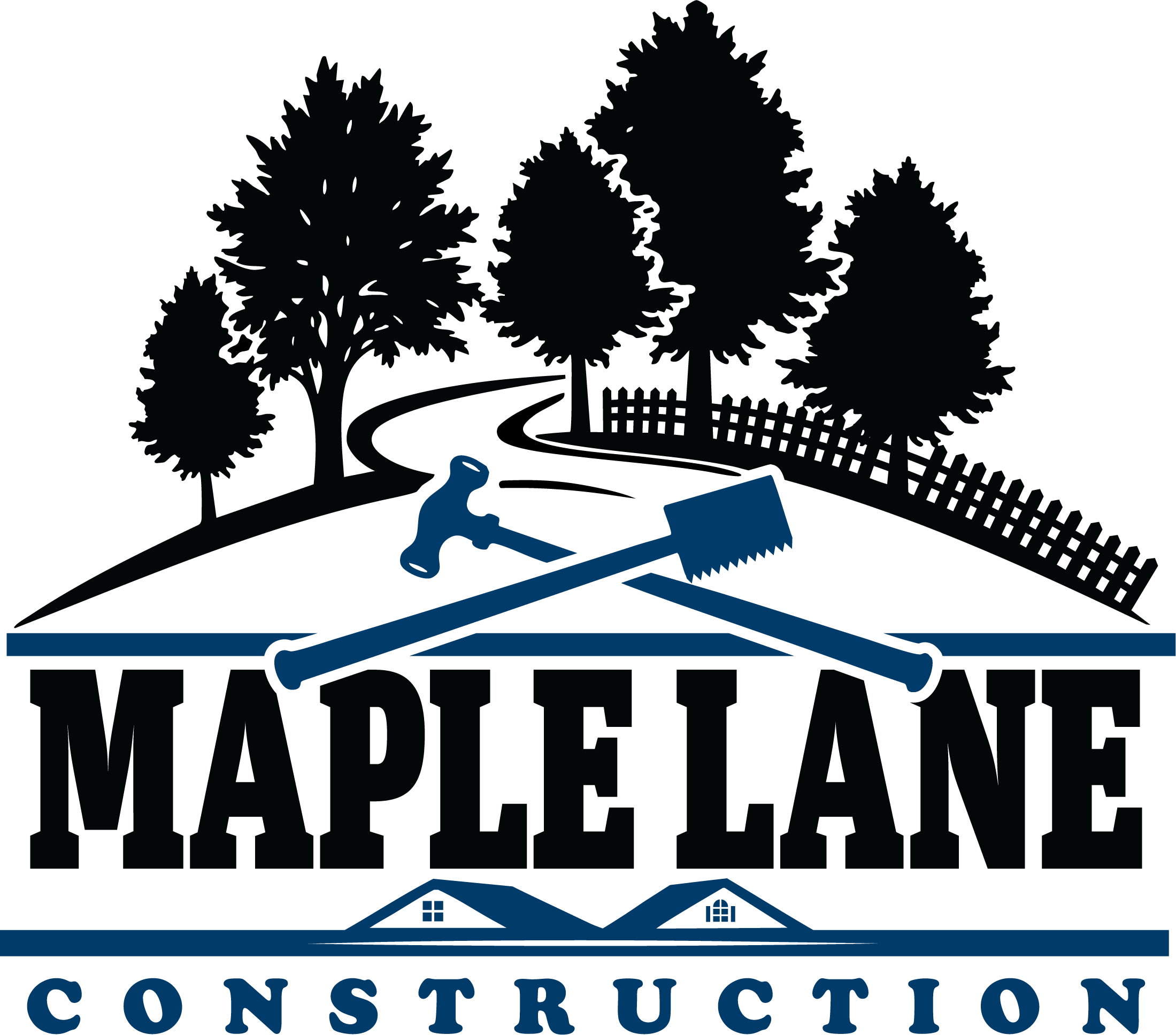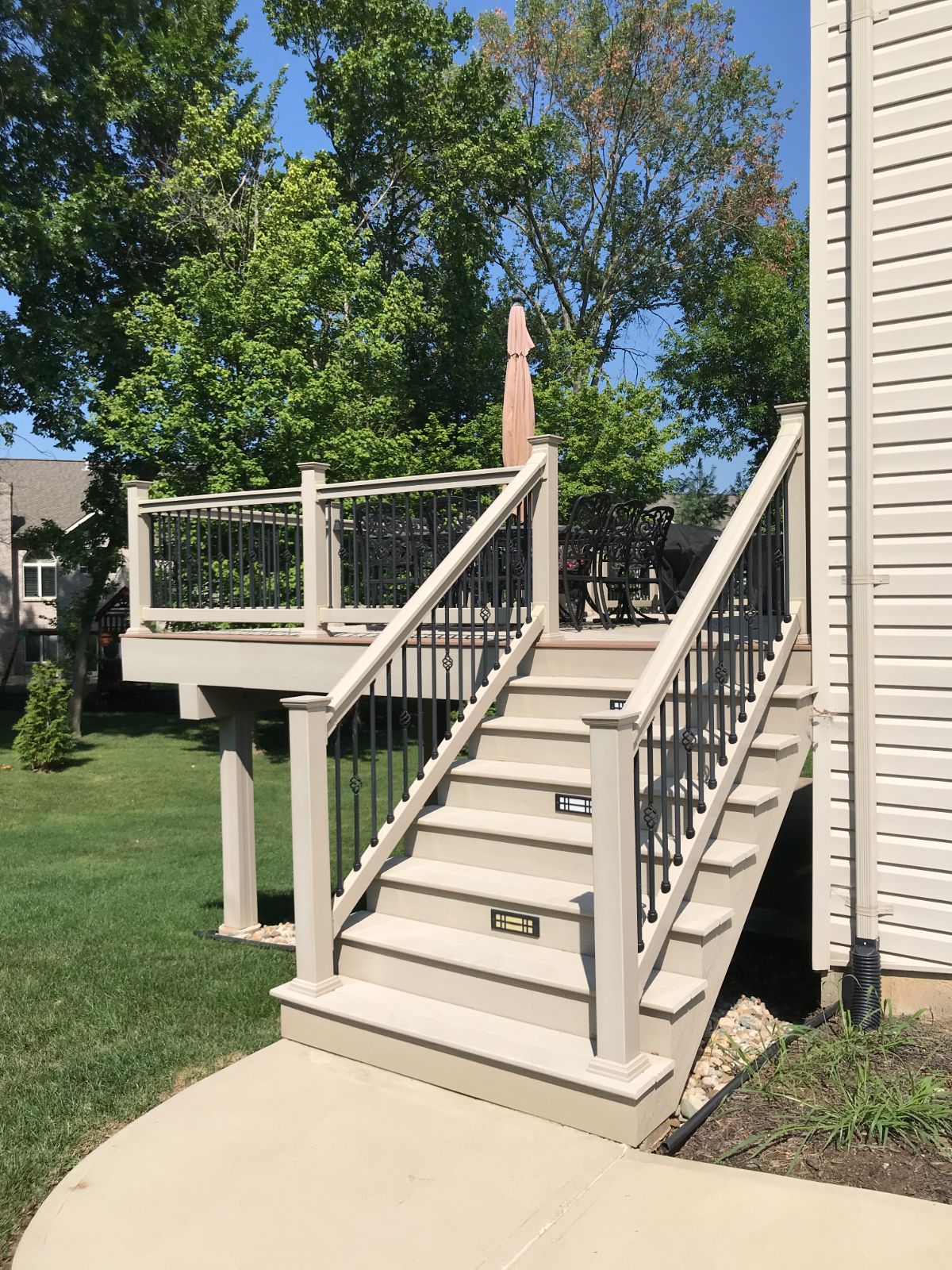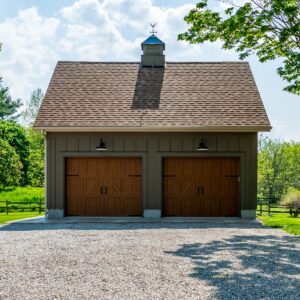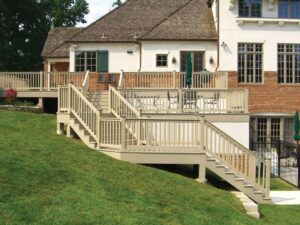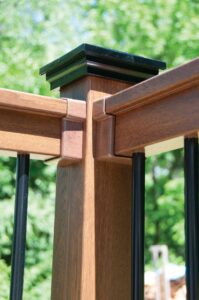Building a new deck should be exciting, not a headache.
At Maple Lane Construction, we’ve seen what can go wrong during a deck building project when shortcuts are taken or small details are missed.
Whether you’re hiring a deck contractor or trying to avoid common DIY mistakes, this guide to deck building tips will help you steer clear of the most frustrating (and expensive) missteps in your next deck building project.
(For some interesting “pitfalls”, the Reddit “Decks” community has some amazing deck failures to learn from.)
Mistake #1: Posts That Aren’t Set Deep Enough
One of the most common and costly issues we run into is shallow footers.
When vertical posts aren’t drilled deep enough into the ground, frost heave can push them up during winter, destabilizing the entire deck structure. We always drill below the frost line when we build decks in Upstate New York to maintain proper deck support and meet local building codes.
Mistake #2: Using Cheap Materials or Frames
Some contractors cut corners with a weak deck frame or low-grade decking materials. This leads to early warping, fading, or structural issues. At Maple Lane, we use high-performance composite decking products—like those from Wolf—that are crafted with recycled wood fibers. These boards outperform pressure treated wood and pressure treated lumber in both durability and appearance. They also mean less maintenance.
For a longer life and a cleaner finish, we recommend using top-quality decking materials and avoiding short-term savings that lead to long-term repairs.
Mistake #3: Undersizing the Deck
A new deck might seem big enough on paper, but once you add a grill, outdoor furniture, and a few guests, you’ll run out of space fast.
We start every deck plan by asking about your goals for the space. What does your dream deck need to accommodate? Planning for enough room now saves time and regret later. Larger decks offer more flexibility for seating areas and entertaining, and we always help you design for comfort and flow.
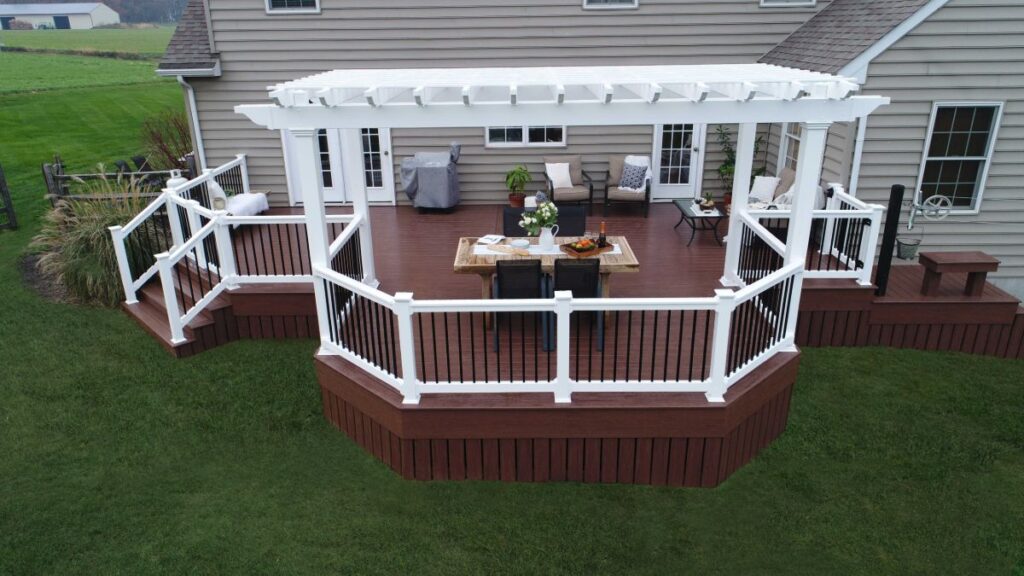
Mistake #4: Overlooking Utility Lines
Buried gas, electric, or water lines can cause delays or safety hazards. Before we drill pilot holes or pour concrete footings, we always identify underground utilities and consult the local utility authority. Ignoring these steps can cause major issues during your deck construction and lead to extra costs.
This is especially important near the property line or when replacing existing structures.
Mistake #5: Ignoring the Mess A New Deck Can Make
Building a deck can temporarily disrupt your lawn, landscape, and access around the home.
While we protect your outdoor space as much as possible, expect some wear and tear during construction. Afterward, it may take some light maintenance to refresh the area. We always leave full access to the deck area and clean up thoroughly, but some reseeding or repairs may be needed after we’re done.
Mistake #6: Poor Attachment to the House
If your deck is attached to existing structures, the connection MUST be properly reinforced.
A ledger board is the horizontal piece that connects your deck to the house, creating a stable anchor point. We install the ledger board into strong framing like the rim joist, not just sheathing or siding, to prevent movement over time. Without this detail, frost heave and shifting soil can create major safety risks. Good attachment practices should follow all local building department guidelines.
Materials We Avoid
Pressure-treated lumber is the go-to for framing and construction, just not for deck boards or railings.
We typically steer clear of pressure treated lumber for decking unless absolutely necessary. Its quality of LOOKS varies too much for the long-term results we expect.
Trex is another big name in composite decking, but we’ve seen it warp during hot weather if left out before installation.
We’ve had far better results with Wolf deck boards that maintain strength, reduce waste, and offer a longer life. Choosing the right decking materials can make all the difference in the performance and maintenance of your deck.
One Final Tip: Think Long-Term Safety and Design
A deck is really a long-term addition to your living space. Whether this is your first deck or your fifth, you’ll want to:
- Choose the right deck size based on how you’ll use it
- Include handrails or a railing system for stairs and elevated areas
- Plan around existing structures, property lines, and local building department regulations
- Use composite materials that are built to last
- Install deck joists and beams with proper spacing and structural care to support your deck boards and maintain a strong deck frame
Better decks come from careful planning, smart material choices, and skilled workmanship. If you’re building a deck in Upstate New York and want it done right the first time, we’d love to help.
Learn more about our custom deck construction services or contact us here to start your deck building project on the right foot.
